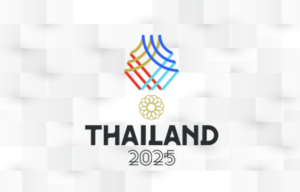Tech Neck Time Bomb: Spinal Health Week Exposes Hidden Cost to Australians’ Health & Productivity
“Get the heads up on tech neck!” – National Spinal Health Week is 26 May to 1 June 2025
With over 5.3 million Australians suffering from neck pain including, Tension Neck Syndrome, a musculoskeletal disorder (MSD) commonly known as ‘tech neck’ or‘text neck’, national Spinal Health Week (26 May to 1 June 2025) is dedicated to promoting spinal health and preventing the incidences of tech neck in Australians of all ages.
MSDs affect the joints, bones, muscles and multiple body areas (including the neck) and cost the Australian economy over $55 billion annually through direct health costs, lost productivity and reduced quality of life.
Dr Billy Chow, President of the Australian Chiropractors Association (ACA) said, “With tech neck emerging as a growing global public health concern, together with the projected increase in MSDs over the next two decades, the health burden on Australians and our economy is and will continue to be significant.”
“With over 34 million mobile phone connections and 95% of Australians accessing the internet via a smartphone, the focus of ACA’s annual national Spinal Health Week(26 May to 1 June 2025) is on encouraging Australians to adjust their thinking and take proactive steps to improve their spinal health and avoid debilitating tech neck,” said Dr Chow.
“Once primarily experienced by seniors, with the advent of smart devices and wide-spread use of tablets and computers by people of all ages including children; we’re seeing a growing number of younger patients in their 30s and 40s suffering from cervical spine disorders due to incorrect use of technology devices,” he said.
Studies have shown smartphone and computer use can have a significant impact on pain severity among tech neck sufferers with the most prevalent symptoms of neck and back pain linked to the length of time spent using a device and the degree of discomfort experienced.
Caused by poor posture and the prolonged or incorrect use of digital devices, tech neck can lead to headaches, neck, shoulder and upper back pain that over time, can lead to changes to the natural curve of the cervical spine.
A recent study ‘The Association Between Mobile Phone Usage Duration, Neck Muscle Endurance, and Neck Pain Among University Students’ published in Nature (29.8.2024), examined the correlation between phone use, duration, addiction, neck muscle endurance, and neck pain in university students.
“Although the study focused on mobile phone use by university students, with almost 87% of Australians now regular smartphone users and 75.5% being daily computer users, it’s fair to consider the findings may be broadly applied to the population generally, particularly young people who’ve grown up using smartphones and tablets,” said Dr Chow.
“While more studies are needed to better understand the implications of incorrect and overuse of technology on spinal health; to help prevent tech neck, we need to re-think how we use devices particularly young people who spend prolonged periods with their head bent forward viewing a smartphone,” he said.
“When it comes to smartphones, not only must we monitor the length of time we use our devices, but we must be cognisant that overuse and the way we use them can negatively impact our spinal health as well as our mental health,” Dr Chow said.
“The ACA recommends limiting recreational screentime to two hours per day, holding devices at eye level to prevent bending the neck forward, changing posture and taking regular breaks every ten minutes to look away from the device and move the neck from side-to-side.”
“Computer use is also a primary cause of tech neck. Although most common among office workers, with 75.5% of Australians aged 16 to 64 using computers daily, incorrect use and computer set up can lead to a range of MSDs.
“Whether using a laptop or a desktop at home, school, university or at work; it’s essential to take regular postural breaks every 30 minutes for movement and stretching and ensure workstations are set up ergonomically correct to help prevent tech neck, increase productivity and maintain overall spinal health and wellbeing,”
“During Spinal Health Week, we’re encouraging all Australians to adjust their thinking on how they use smartphones, tablets and computers to help prevent persistent, aggravated head, neck and upper back injuries which impact productivity at home, school and at work,” he said.
For sufferers of tech neck, while medications may offer temporary relief from neck and back pain, academic studies (including a Sydney University study) show opioids do not benefit people with acute neck or back pain (lasting up to 12 weeks) and have no positive role in treatment.
However, studies have shown that commencing treatment for tech neck promptly is crucial in preventing further functional decline and progression to a chronic condition. Effective treatment outcomes are achieved through a combination of strengthening and stretching exercises, manual therapy and postural correction.
“Every week over 400,000 chiropractic healthcare consultations help create well-adjusted Australians as ACA chiropractors play an important role in improving the spinal health of everyday Australians,” said Dr Chow.
“This Spinal Health Week, we’re inviting Australians to join the movement to learn and share practical strategies that can help prevent tech neck, promote overall spinal health ad wellbeing, and reduce the economic and personal burden of MSDs,” Dr Chow said.
As a leader in musculoskeletal health, ACA has invested over $2.3 million to advance research in building evidence-based practice for chiropractic healthcare and promotes the importance of maintaining spinal health through its annual flagship campaign, National Spinal Health Week – Australia’s longest running and award-winning health awareness campaign dedicated to improving the spinal health of Australians of all ages.
Get the heads up on tech neck and download ACA’s FREE Avoiding Tech Neck Factsheets and Electronic Device Checklistsfor Adults, Parents and Students, the Ergonomic Checklist, and the Stand Corrected Stretching Poster available to download from www.spinalhealthweek.org.au.
This press release has also been published on VRITIMES









